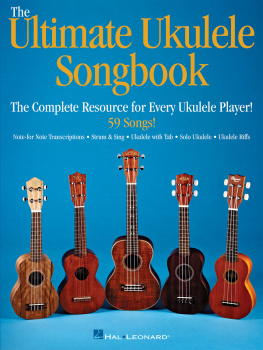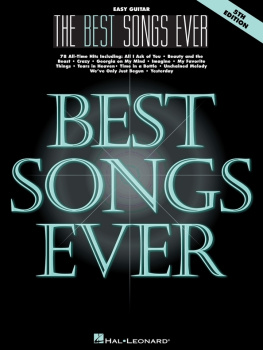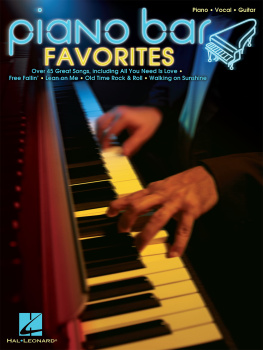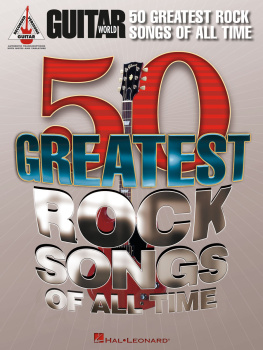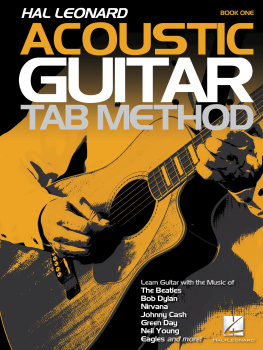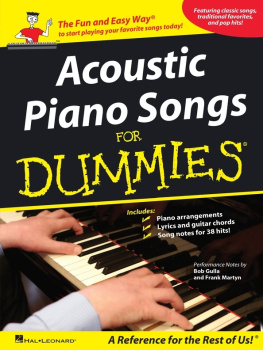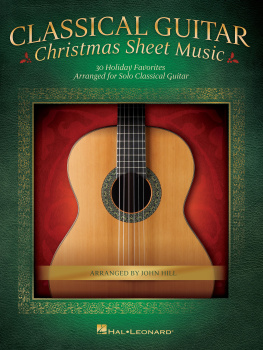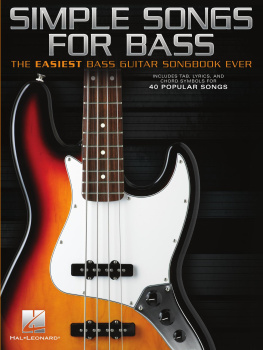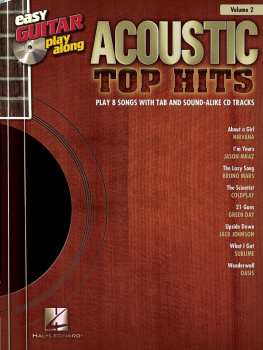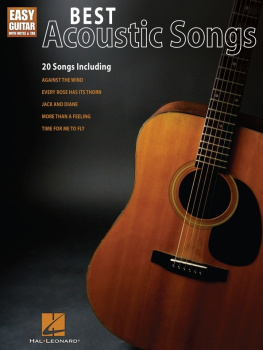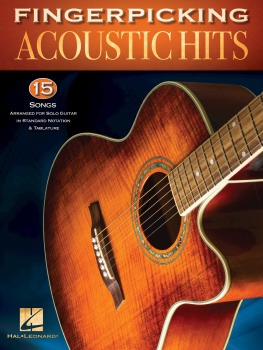
7777 W. Bluemound Rd. P.O. Box 13819 Milwaukee, WI 53213
In Australia Contact:
Hal Leonard Australia Pty. Ltd.
4 Lentara Court
Cheltenham, Victoria, 3192 Australia
For all works contained herein:
Unauthorized copying, arranging, adapting, recording, Internet posting,
public performance, or other distribution of the printed music
in this publication is an infringement of copyright.
Infringers are liable under the law.
Visit Hal Leonard Online at
www.halleonard.com
Contents
INTRODUCTION
The looping craze has reached unthinkable heights over the past few years. Whereas once thought of as a bitof a novelty, looping pedals have become essential tools in many artists gear lockers. Videos featuring looperssimply litter YouTubefrom Michael Jackson covers to funky one-man improvs. Several name artists as well, includingEd Sheeran, KT Tunstall, Reggie Watts, Andrew Bird, and David Torn, among others, have made loopersan integral part of their live show, enabling them to create rich, dynamic, sprawling textures all by their lonesome.And yet, with all this popularity, very little in the way of loop-specific arrangements is available. Enter the LooperPedal Songbook . In this book, youll find 50 arrangements of songs in various styles that will put your looping skillsto good use.
So, what is a looper anyway? In short, its a device that stores musical phrases and plays them back for you. Notonly that, but it allows you to overdub (or layer) new phrases on top of your original phrase. For example, youcould record a bass line first, and then overdub some chords on top of it. Then you could record a melody or soloon top of the bass and chords, and then add a harmony to your melody or solo, and so on! Looping pedals comein many different varieties, but all of them will have this basic functionality. If youve not messed around with onemuch before, youre in for a world of musical fun! I hope you enjoy playing the arrangements in this book as muchI did creating them.
ABOUT THE ARRANGEMENTS
Before we start laying down some grooves, we need to talk just a bit about equipment, conventions, and theterminology used in this book. After all, none of this has been standardized at this point, so I had to create amethod of notating these concepts. After reading through this section, you should be well-equipped to understandanything you see in the following songs.
Assumptions
As each players rig will differ substantially, its important to clarify whats assumed with these arrangements.Weve tried to aim for the lowest common denominator here, ensuring that the vast majority of players will beable to perform many of these arrangements right out of the box. In other words, if you own a looper pedal, thenyou most likely ownor have access tothe rest of the gear mentioned. If not, however, there are still plenty ofarrangements that can be performed with nothing but a guitar and a looper.
These arrangements have been designed to be performed on either an acoustic or electric guitar. Those designedfor acoustic will say Gtr. (acous.) at the beginning of the song, and the electric ones will simply say Gtr. at thebeginning and give a tonal description, such as w/ clean tone or w/ dist., etc. The arrangements are thereforetailored to these instruments with regards to techniques. For example, many of the acoustic arrangements will featurepercussive sounds that are often created by hitting various parts of the guitars body. The electric arrangements willsometimes feature effects (such as delay, etc.) that are commonly employed with the electric guitar.
There are dozens of loopers on the market, from extremely simple to extremely sophisticated. The arrangementsin this book should be performable on even the most modest looper. The only requirements are that:
Its able to store loops of up to approximately 35 secondsthe longest loop called for is in the song Sunny
Its able to endlessly overdub parts on top
The loop can be turned on and off
You are able to play live guitar parts on top while the loop is playing
Im not aware of any loopers on the market that dont fit these criteria. In fact, most pedals will have many morefeatures, such as multiple loops, an undo feature, etc. But the songs in this book have been arranged so thatyou wont need any of these fancier features.
Terminology
Lets take a look at the terms used in the book and what they mean.
Start Loop
This is usually the first direction youll see. It instructs you to start recording a loop. For example, in many songs,youll first start by laying down a bass line. Most of the arrangements only feature one loop during the song(though it may be turned off and turned back on later), so this direction will usually appear as Start Loop 1.However, a few songs do feature an additional loop. In this instance, youd need to clear the first loop (see yourloopers manual) and start recording a new loop when you see Start Loop 2.
End Loop
This is usually the second direction youll see, and it tells you when to stop recording the loop. Once you do this,the loop should start playing back from the beginning. Again, youll usually see this description as End Loop 1.
Overdub on Loop
This tells you to start recording an overdub on top of your loop. In other words, if Loop 1 consists of a bass line,you may overdub some chords on top of it.
End Overdub
This tells you when to stop recording your overdub. The direction will usually coincide with the end of the loopedphrase, but this is only because youll usually be playing something right up until that point. If you only neededto overdub one note in the middle of the loop, theres no reason you couldnt stop overdubbing immediately afterthat note.
w/ Loop
This direction simply tells you that the loop should be playing. Its placed at the beginning of every new sectionof music in which the loop should be playing.
Loop Off
Occasionally, there will be times when youll need to turn the loop off in a song. This is usually because the chordprogression changes. Most times, this direction will appear at the end of the section immediately preceding thenew one. For example, if the chord progression changes in the chorus, then youll see Loop 1 off at the veryend of the verse. Occasionally, however, due to certain routings, this direction may appear at the very beginningof the new section. In very few instances, it will appear in the middle of a section (or measure), in which case theturn-off point should be clear if you simply listen to the original recording of the song.
Loop On
If the loop has been turned off, this direction tells you to turn it back on. It will appear at the beginning of the newsection where the loop returns. Note that this direction will only appear if the loop has been previously turned off.Otherwise, the w/ Loop direction will appear at any new section in which the loop is used.
Rhy. Fig.
This indicates the beginning of a rhythm part that will later be recalled. This is only used for live partsi.e., partsthat you (not the looper) will be playing more than once in the song. Most songs will use only one recalled rhythmfigure, in which case it will be labeled Rhy. Fig. 1. But a few songs will feature more than one.


